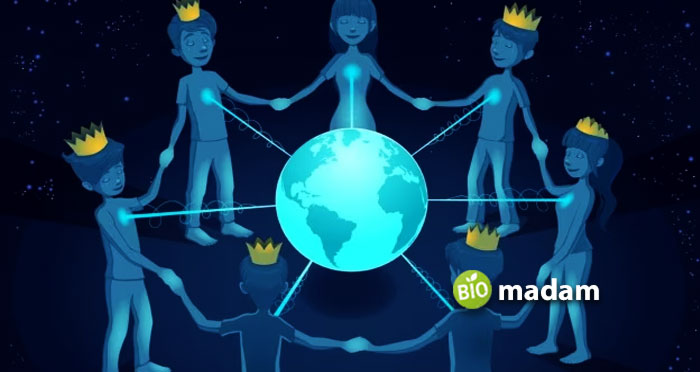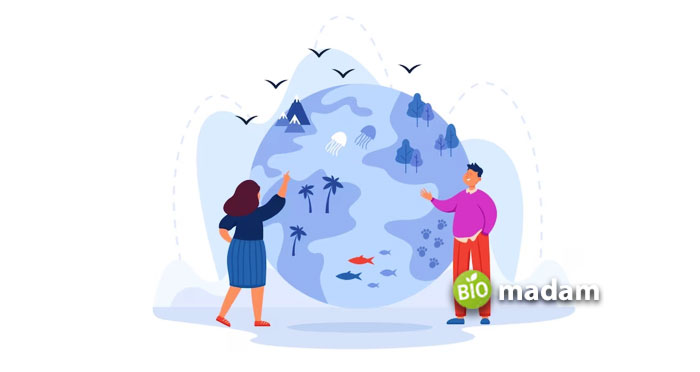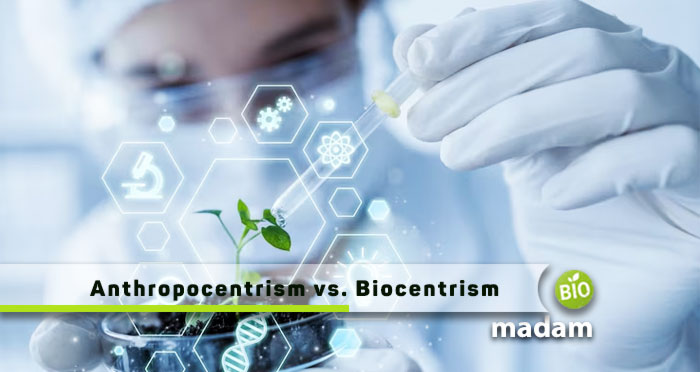Biology has been advancing in recent decades, giving rise to theories like anthropocentrism and biocentrism. Both these theories relate to the formation of the universe and the role of different organisms in maintaining ecosystems. Biocentrism is a living-organism-centered approach, whereas anthropocentrism considers humans above all other living beings. Researchers have explained these concepts in depth with various claims. This article helps you know everything regarding anthropocentrism vs biocentrism.
What is Anthropocentrism?
Anthropocentrism is a theory stating that humans are superior to all other organisms. It means that the believers of this theory put human beings in the center of the universe. They say that humans are the focal point of the universe; everything else, including other living organisms, is only a background. So, according to anthropocentrism, the perspective and welfare of humans are the most important, and everything else is secondary.
It also implies that humans can use their surroundings and other living organisms for their benefit, which often does not sit well with environmentalists who preach an environment-centered approach. However, scientists promoting anthropocentrism believe that the consequences are short-lived and, eventually, the welfare of humans is beneficial to everyone.
Scientists promoting anthropocentrism say that if non-anthropocentric organisms are also valuable, humans can use them for their benefit.

Critiques and Counter Arguments
While anthropocentrism shares how humans are the most important, it showcases a conservative approach to environmental ethics. Researchers against anthropocentrism believe an ethical approach would treat all organisms equally, as nature does not only comprise human beings.
They also mention that the damages caused by humans threaten the well-being of humans and other organisms. This approach affects animals, insects, and plants during urbanization, such as the Houston toad which provided no value to humans.
However, taking care of the environment, including the air and water, is also an important part of anthropocentrism as all these elements contribute to the well-being of humans.
What is Biocentrism?
Biocentrism is a theory shared by Robert Lanza, focusing on considering all animals equal compared to anthropocentrism. Biocentrism comes from bio and centrism and, thus, puts life at the center of the universe. Lanza mentions that life or living organisms were not created for the universe. Instead, the universe was created to facilitate living beings. He mentions our consciousness shapes the universe.
Besides keeping life at the universe’s center and mentioning that all animals are equal, he also says that all animals are interrelated. As biocentrism focuses on biology and physics simultaneously, the theory further states that life is infinite and time is absolute. The biocentrism theory says that living organisms transport to another world after death, i.e., rebirth and evolution. Furthermore, it mentions that events are happening in multiple places at the same time, and it is all about our consciousness.
However, biocentrism does not consider non-living organisms an important part of the universe.

Critiques and Counter Arguments
Several arguments against biocentrism are raised, so it’s not a measurable or testable theory as of now; thus making it challenging to believe in it. Also, mentioning time as an absolute entity and life’s infinity does not sit well with other researchers, philosophies, and religions.
So, many researchers believe in biocentrism debunking as it denies many existing laws of physics, like the theory of relativity and laws of thermodynamics. Furthermore, the absence of measurable results makes it sound more like a philosophical theory than a scientific one.
Differences between Anthropocentrism and Biocentrism
Definition
Anthropocentrism
Anthropocentrism theory mentions that humans are superior to all organisms and that they are the rulers.
Biocentrism
On the other hand, the theory of biocentrism believes that all organisms are equal and interconnected.
Literal Meaning
Anthropocentrism
Anthropocentrism comes from the Greek word Anthropos, translating to humans.
Biocentrism
Contrarily, biocentrism combines the Greek words ‘bios,’ meaning life, and ‘kentron,’ translating to center.
Value of Humans
Anthropocentrism
Humans have central importance in anthropocentrism as this theory keeps humans superior on all.
Biocentrism
Biocentrism does not give any intrinsic value to humans compared to other organisms, but states that all living entities have moral status.
Focus
Anthropocentrism
Anthropocentrism considers humans the center of everything in the world, which means this theory is entirely human-centered.
Biocentrism
However, biocentrism believes all living organisms, including humans, are equal; thus promoting the concept of being life-centered.
Background Elements
Anthropocentrism
All living organisms except humans are considered background elements in anthropocentrism.
Biocentrism
At the same time, biocentrism puts the non-living elements in the background.
Counter Arguments
Anthropocentrism
The use of other organisms for the welfare of humans makes anthropocentrism an unethical approach.
Biocentrism
Whereas, the absence of testing or results makes it difficult to believe in biocentrism.
The Bottom Line
Anthropocentrism and biocentrism are two different biological theories aiming to explain the role and importance of organisms in the universe. Anthropocentrism mentions that humans are the most important entity in the universe and other organisms are only background elements. However, biocentrism promotes the concept of equality among all organisms. Biocentrism also mentions that the universe results from our consciousness and was made to facilitate life. Both have critiques that say anthropocentrism is unethical, and biocentrism sounds more philosophical due to a lack of evidence.
FAQs
What is an example of biocentrism?
Biocentrism focuses on facilitating life, including all organisms. As it says all living organisms are equal, humans must not use others for their benefit. So biocentrism promoters encourage vegetarianism. They also discourage the use of fur and deforestation to protect other living components of the ecosystem.
What are the three types of anthropocentrism?
While the main idea of anthropocentrism is the importance of humans over other organisms, it can be used in three meanings: ethical anthropocentrism, ontological anthropocentrism, and epistemological anthropocentrism.
How does biocentrism explain death?
Biocentrism does not believe death is linear, so dying does not mean your life ends. Instead, biocentrism mentions life as an infinite cycle. So, when you die, you are transported into another world, followed by rebirth. It also touches upon the concept of evolution.
What is the opposite of anthropocentrism?
The opposite of anthropocentrism is ecocentrism which considers the ecosystem as the main element of the universe. It gives no intrinsic value to humans but also does not ignore nature. Ecocentrism understands and appreciates the importance of natural elements to life.
Is biocentrism anthropocentric?
No, biocentrism is not anthropocentric. Instead, both theories are unique and differ in their basic ideas. Biocentrism believes all organisms are equal and essential to the universe, whereas anthropocentrism focuses on the welfare of humans only.

Meet me; I am Paulina Zaniewska, who’s more hooked on providing the best health blog. I’ve always been so determined to compete as a nutritionist, and here I am, done with a Master’s in food technology. My brilliant performance throughout encouraged me to help people.

